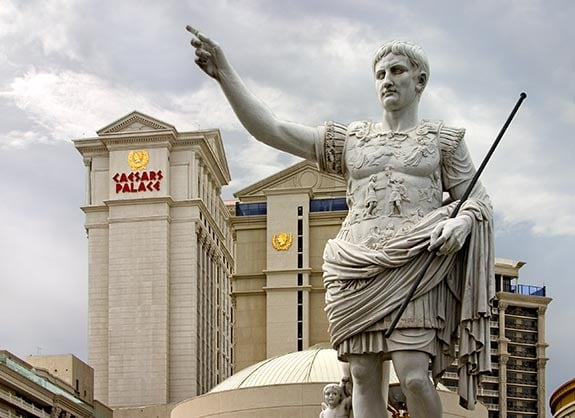Caesars Faces Billions in Claims, Investigation Finds Evidence of Private Equity Asset-Stripping
Posted on: March 16, 2016, 03:10h.
Last updated on: March 16, 2016, 03:12h.

Caesars could face billions of dollars in potential damages in relation to its bankruptcy restructuring, according to the recommendations of a court-ordered examiners’ report, published Tuesday.
The company is seeking chapter 11 bankruptcy for its chief operating unit, CEOC, in an attempt to reorganize $18 billion of its debt, but is facing opposition from its junior creditors.
Ex-Watergate prosecutor Richard Davis led a team of lawyers which spent a year investigating the casino giant’s corporate dealings.
Their aim: to determine whether, as alleged, the company fraudulently transferred many of CEOC’s prime assets to Caesars Entertainment and other subsidiaries for the benefit of its controlling private equity backers, while placing them out of the reach of the junior creditors.
This form of asset-stripping left CEOC with nothing but distressed assets and an inability to pay its debts, argues a group of creditors led by the Appaloosa Management hedge fund, which is suing Caesars.
CEOC Possibly Insolvent as Early as 2008
The investigation team poured over 80 million pages of documents to produce its 80-page report. But ultimately it all boiled down to one word.
“The simple answer to this question is ‘yes’,” wrote Davis, referring to the allegations.
The report found that CEOC was indeed picked clean of its prize properties for the benefit of its controlling backers, Apollo Global Management and TPG Capital, whose leveraged buy-out of the company in 2008 resulted in the industry-high debt load.
Davis said that sometime in 2012, Apollo and TPG began a strategy to weaken CEOC and strengthen their own hand in the preparation for potential bankruptcy proceedings. He added that CEOC was possibly insolvent as early as 2008, the non-disclosure of which would have amounted to a breach of fiduciary duties to the company’s shareholders.
“In assessing the actions of [Caesars Entertainment] and the sponsors (TPG and Apollo), it is important to remember that the sponsors are among the most financially savvy investors in the country,” Davis wrote.
“There was never any realistic chance that CEOC would ever pay all of its creditors at par through a refinancing of CEOC’s debt or otherwise, and CEC and [Apollo and TPG], in light of their own analyses, could not reasonably have thought differently,” he added.
Apollo Denial
Caesars, however, has branded the report “subjective.” Meanwhile, in an email to Reuters, Apollo Capital management refuted the findings.
“We believe that Apollo . . . acted appropriately and in good faith to help CEOC strengthen its capital structure,” the company said.
Davis estimated that potential damages for creditors’ claims on the basis of his findings ranged from $3.6 billion to $5.1 billion.
Published on March 15, also known as the Ides of March, which was the date on which Julius Caesar was assassinated, the report sent Caesars stock tumbling by 18 percent at the close of trading.
Et tu, Brute?
Related News Articles
GLPI Acquires Pinnacle Properties in $4.74 Billion Deal
Jim Murren Considering Taking MGM Off the Grid in Nevada
Wynn Everett and City of Boston Come to Financial Terms, Litigation Put Aside
Most Popular
Genovese Capo Sentenced for Illegal Gambling on Long Island
VEGAS MYTHS RE-BUSTED: The Strip is the Brightest Place on Earth
UPDATE: Former Resorts World & MGM Grand Prez Loses Gaming License
Jackpot News Roundup: Two Major Holiday Wins at California’s Sky River Casino
VEGAS MYTHS RE-BUSTED: The Traveling Welcome to Las Vegas Sign
Most Commented
-
UPDATE: Whiskey Pete’s Casino Near Las Vegas Closes
— December 20, 2024 — 33 Comments -
Zillow: Town Outside Las Vegas Named the Most Popular Retirement City in 2024
— December 26, 2024 — 19 Comments -
Caesars Virginia in Danville Now Accepting Hotel Room Reservations
— November 27, 2024 — 9 Comments -
UPDATE: Former Resorts World & MGM Grand Prez Loses Gaming License
— December 19, 2024 — 8 Comments
















No comments yet